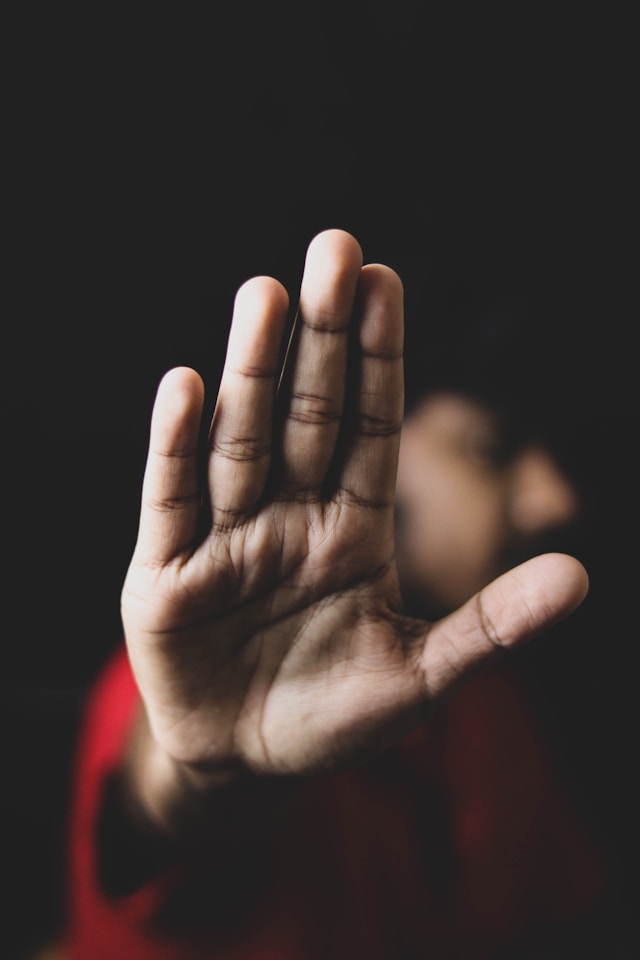Colored with scrolling
Try scrolling the rest of the page to see this option in action.
Try scrolling the rest of the page to see this option in action.

Domestic violence is a serious problem that has an impact on many people and families, which makes the divorce process difficult. Protecting oneself and one’s children requires knowing how to handle the complexity of family law, especially when it comes to such a sensitive subject. Let’s check the details about domestic violence and divorce and steps to protect you.
Family law includes all legal matters related to family relationships, including marriage, divorce, child custody, and support. To successfully protect your interests when domestic violence is involved, it is essential that you have a firm understanding of these concepts.
In general, domestic violence is about one person having power over another partner and controlling their actions in a relationship. This can take many forms, from physical aggression to subtle emotional manipulation, each leaving profound scars on the victim. When the difficult decision to divorce comes into play, these dynamics can complicate the process, turning it into a minefield of emotional and legal battles.
The abusive partner might use the divorce process to extend or intensify their control, making it crucial for the victim to recognize the situation’s complexity. Understanding the nuances of how domestic violence impacts family law proceedings is a crucial step in securing not just legal freedom but also personal safety and emotional healing.
Through the use of lawyers and other specialists, spouses may collaboratively work out the terms of their divorce without having to go to court. This procedure may be especially helpful when there has been domestic abuse since it gives the sufferer a more secure and regulated setting. For instance, Mike and Sarah chose to go through with a collaborative divorce.
Through their lawyers, they were able to negotiate terms that ensured Sarah’s safety and the well-being of their children, without direct confrontation.
Child custody and domestic violence are related. When domestic violence is involved, the stakes are even higher in child custody cases. Courts will consider the safety and welfare of the child as the paramount concern. Demonstrating the impact of domestic violence on the child’s well-being is crucial. This might include providing proof in the form of witness statements, restraining orders, or police records.
For instance, Laura was able to get sole custody of her daughter by presenting the court with in-depth reports of the domestic abuse they experienced and highlighting the danger her former spouse presented.
A legally enforceable contract that describes the conditions of a couple’s separation, including things like child custody, support, and property split, is called a separation agreement. It might act as the divorce decree’s basis. By drafting a separation agreement, a victim of domestic abuse may set out precise guidelines and expectations, perhaps preventing future confrontations.
Parental alienation syndrome occurs when one parent manipulates the child against the other parent, often seen in contentious divorces. Victims of domestic violence should be aware of this syndrome, as abusers might use children to exert control or inflict pain. Understanding the signs and seeking professional help early can prevent lasting damage to the child-parent relationship.
Emily sought the help of a child psychologist when she noticed her children becoming distant and resentful towards her, under the influence of their father’s manipulations, allowing her to address the issue promptly.
It’s crucial to document all instances of abuse, capturing the dates, times, and any available supporting documentation such as emails, messages, or medical records. This documentation serves as a foundational piece of evidence in legal proceedings and is instrumental in substantiating your claims against the abuser.
To do this effectively, maintain a detailed journal or log that records each incident of abuse. Include photographs of any injuries, abusive communications, and medical reports if treatment was sought for injuries. Ensure this documentation is kept in a secure location, inaccessible to the abuser, possibly entrusting it to a reliable friend or using secure digital storage solutions.
Speaking with a family law lawyer who has handled instances involving domestic violence may be quite helpful. They will help you navigate the challenging legal journey with ease. After finding an attorney, confidentially discuss your situation to explore your legal options and plan your next steps.
Using hotlines, counseling programs, and shelters for victims of domestic abuse may provide vital assistance and access to different options. These groups may provide links to therapeutic therapy, legal help, and secure housing, as well as emotional support. To make use of these services, look into nearby resources via research and make contact. Hotlines for victims of domestic abuse may help you get help right away and connect you with other resources like therapy and shelters. These tools are intended to provide you with both practical and emotional assistance as you work through the current situation and make plans for a safer future.
You need to have a safety plan. A strategy like this describes how to stay out of harm’s path and what to do if you find yourself in danger. Your plan should include a list of emergency contacts, safe locations to travel in an emergency, and a secure way to swiftly access money if necessary.
Assembling personal belongings and necessary paperwork is also crucial to ensure a prompt departure. It is important to make these arrangements covertly so that you may get out of the abusive situation as quickly and securely as possible when the time comes.
Navigating divorce in the shadow of domestic violence is a profoundly challenging experience. However, by understanding the nuances of family law, using collaborative divorce, and effectively addressing child custody and safety, you can protect yourself and your children.
Remember, you are not alone. Subscribe to LawVo and our legal professionals will be available to help you through this process. Empower yourself with knowledge, seek support, and take decisive steps.
Back to blogs